Container gardening is a quick and easy way to grow plants and flowers, but it’s also a great option for growing fruit, vegetables and herbs. You can even grow trees if you have large enough pots! Ideal for courtyards, balconies, rental properties and gardens without soil, containers are easy to move around and allow you to overwinter tender plants more easily. Whether you want to add a few colourful pots to your patio or create an entire garden in containers, we’ve got you covered.
Browse our full range of planters, pots and containers for ideas.
What type of garden container should you use?
There are many different containers including hanging baskets, window boxes, troughs, grow bags and various sized pots. If you’re looking for patio containers, you’ll have a choice of many different materials: ceramic, terracotta, plastic, stone, wood, metal and more. The difference is mainly aesthetic, but some are more frost-proof than others. Some, like terracotta, also allow the soil to dry out slightly faster, and so may need watering more frequently. Whatever you decide to use, be sure that you have enough drainage holes and that there’s plenty of room for your plants’ roots to grow.
If you prefer to reuse rather than buy new, try upcycling old wheelbarrows, kitchen sinks, chimney pots, buckets, fruit crates, tins and even old wellies. Almost anything that will hold soil and allow water to drain is suitable.
How to prepare your container for planting
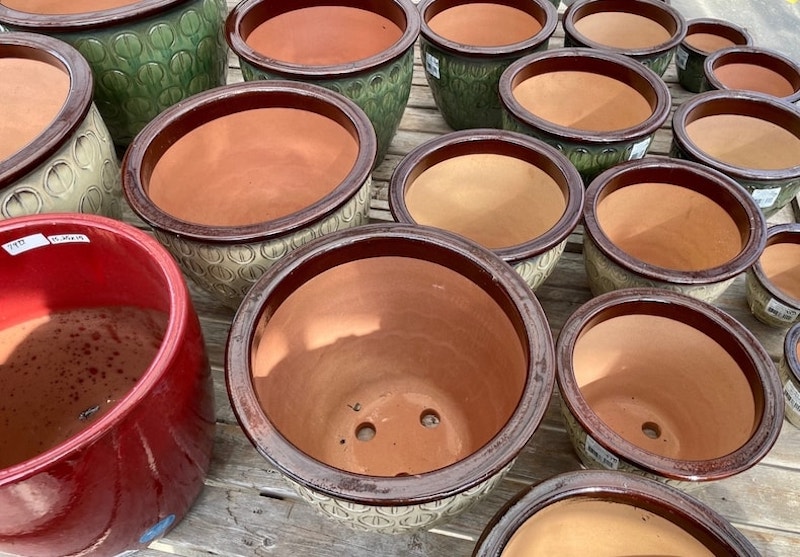
Image: Shutterstock
First, make sure that your container has at least one drainage hole and put some crocks, styrofoam or newspaper and gravel in the base to keep the holes from getting blocked. This also helps to reduce the amount of soil you need, especially if your container is very deep.
Decide where you want your container to go and, if possible, move it into position before you begin planting. Once filled, it’s likely to be very heavy. Check the requirements of the plants you intend to grow. Some will need full sun while others thrive in shade. Whatever varieties you choose, they’re likely to perform better in a sheltered spot away from strong wind.
When you’re ready to fill your containers, choose a lightweight, multi-purpose compost. Regular garden soil is too heavy and dense. You can add some slow release fertiliser when it’s time to plant and, if you’re growing shrubs, trees or perennials, simply remove the top few inches each year and replace with new compost. Remember to leave space for watering – don’t fill your containers right to the top or the water will run off before it has a chance to absorb.
Best plants and flowers for containers
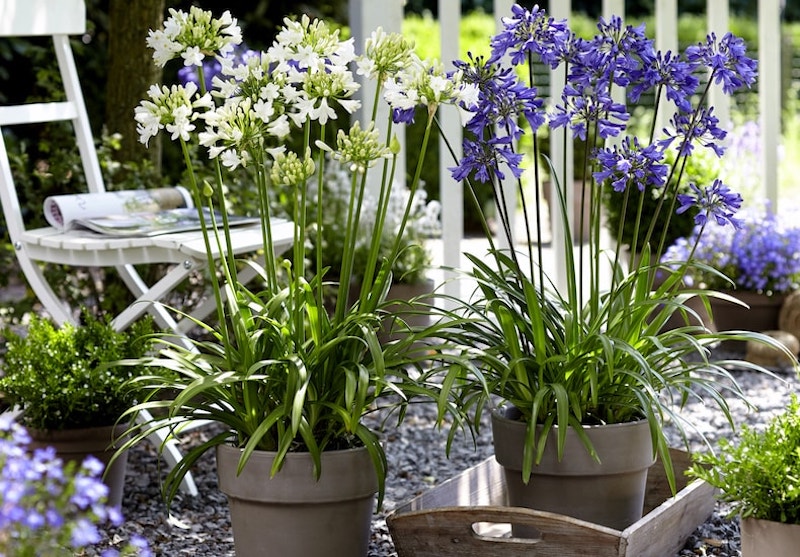
Image: Agapanthus Plants – Blue and White Collection from Suttons/©Branded Garden Products
The most popular container plants are geraniums, petunias, impatiens (busy lizzies), fuchsias and lobelias, but in reality there is a huge range of patio plants from which to choose. Some look striking when grown on their own, for example impatiens and patio roses, whereas others look better in a mixed planting. Whether you go for a monochrome style or vibrant colour theme is down to personal choice. If you’re not sure where to begin, bedding plants are a quick and easy option. If you’re after something more unusual, try a mini fruit tree or add grasses, ferns, alpines and exotic foliage to your display.
Evergreens such as box and bay trees also work really well in containers and provide all year round interest. Just make sure that the chosen container is frost-proof so it doesn’t shatter when the temperature drops.
Best vegetables for containers
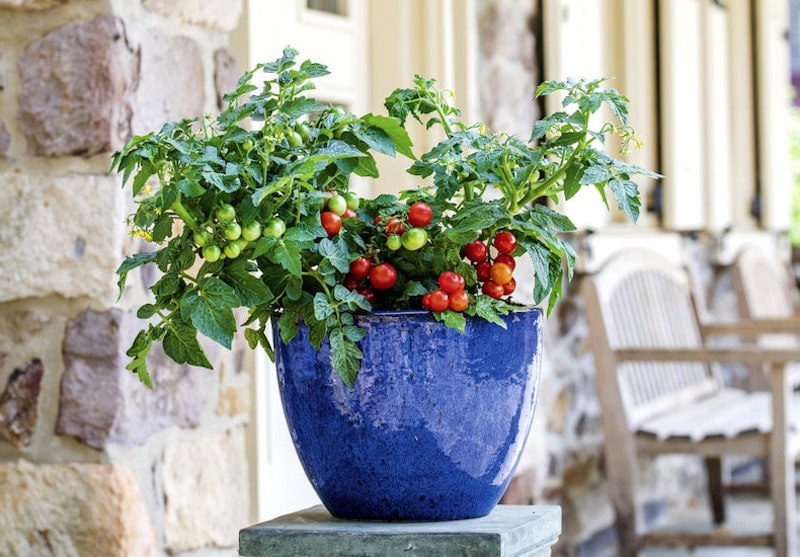
Image: Tomato ‘Veranda’ from Suttons
Many fruits and vegetables can be grown in pots, but some are more suited to this type of growing than others. Potatoes are one of the most popular crops to grow in containers. Less prone to pests and diseases in the soil, you simply tip them out onto a sheet when it’s time to harvest! Read our full article on growing potatoes in pots and containers if you want to learn more. Here are some of the fruit and vegetables that lend themselves well to container gardening:
- Beetroot
- Blueberries
- Broad beans
- Chillies
- Dwarf French beans
- Patio fruit trees eg apples, pears, cherries, plums
- Peas
- Potatoes
- Radishes
- Rocket
- Runner beans
- Salad leaves
- Salad onions
- Strawberries
- Sweet peppers
- Tomatoes
- Herbs
Feeding and watering your container plants
Container gardens don’t have their roots in the ground, so they rely on you for water and nutrients. Slow-release fertilisers will get them off to a good start, but adding some liquid feed to your watering can will give them a further boost during the growing season. Every one or two weeks should be enough, but if the foliage begins to pale, this is a sign that you need to increase your feeding regime.
Multi-purpose container compost dries out much more quickly than soil in the ground so you’ll need to keep an eye on the moisture levels and water as required. Some plants, like lobelia, hate to dry out, and may not recover from a period of drought.
Quick tips to help you care for container plants

Image: Pots of Colour Bulbs – Mix from Suttons/©Floramedia
- Try to use the biggest size container that you can. This prevents the pot drying out and gives the plants plenty of room to put down roots.
- For floral containers, plant too many rather than too few. A packed container will present a lush, full effect. Just make sure you fertilise and water thoroughly to compensate for the extra plants.
- No matter how warm it is during the day, don’t leave annual pots and baskets outside until the danger of frost has completely passed.
- Keep an eye on pots in exposed positions as they will lose more water than those in sheltered spots. Clay pots are porous and lose moisture very quickly.
- Deadhead regularly to prolong flowering. This also keeps containers looking tidy and prevents tightly packed plants from succumbing to fungal diseases.
- Feeding and watering are the key to successful container gardening. Never allow the compost to completely dry out and feed weekly during the growing season.
- Water either early in the morning or in the evening, so that the plants can take up the moisture before they are in direct sunlight.
- If your plants are drooping around midday, check how wet the compost is about ½ inch down. If it feels damp then the plants will pick up when the sun goes down.
Want to grow more of your own crops on your balcony or patio? Take a look at our patio fruit and veg growing guide which includes tips on what to grow, how to plant and what kind of container to choose.
Lead image: Coreopsis ‘Solar Collection’ from Suttons

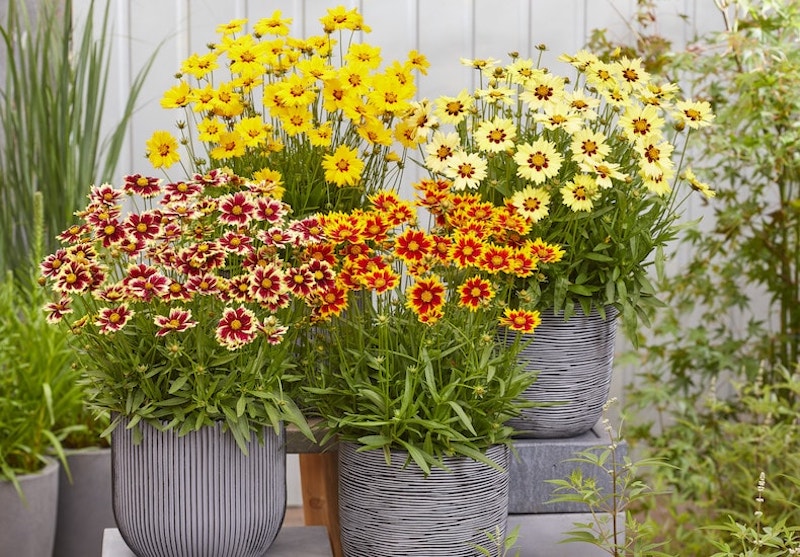
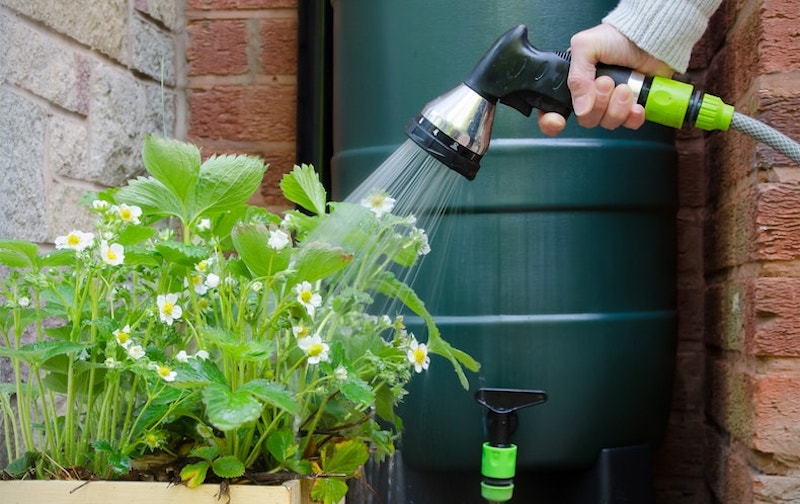



NO THEY WILL TAKE OVER YOUR GARDEN —- A TOTAL PEST
.HOW TO GET RID OF THEM ? If you know let me IN ON THE SECRET THEY HAVE GROWN EVERYWHERE AND SEEM TO BE INDESTRUCTABLE —– foxes, dogs cats and squirrels digging in my garden do not help